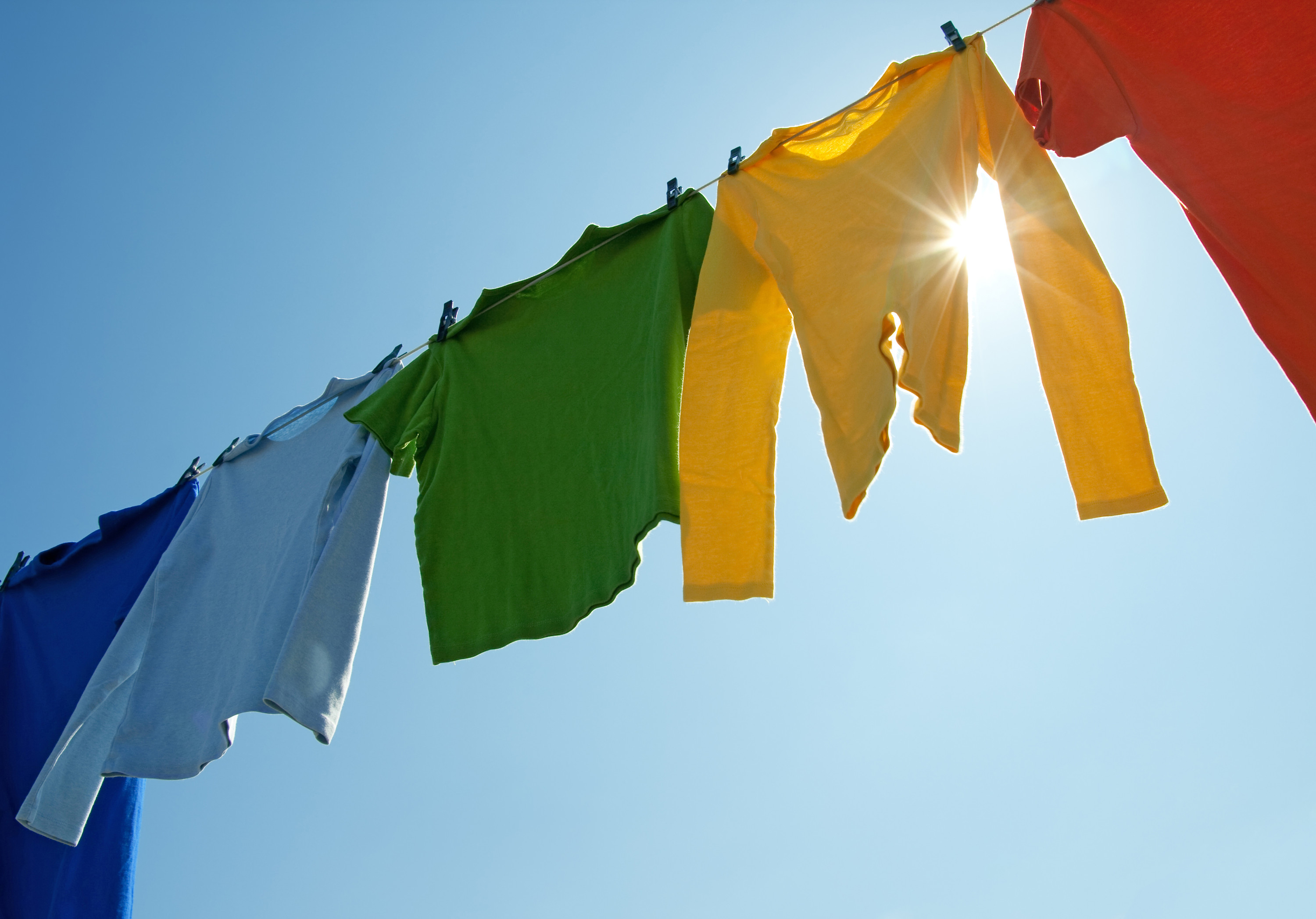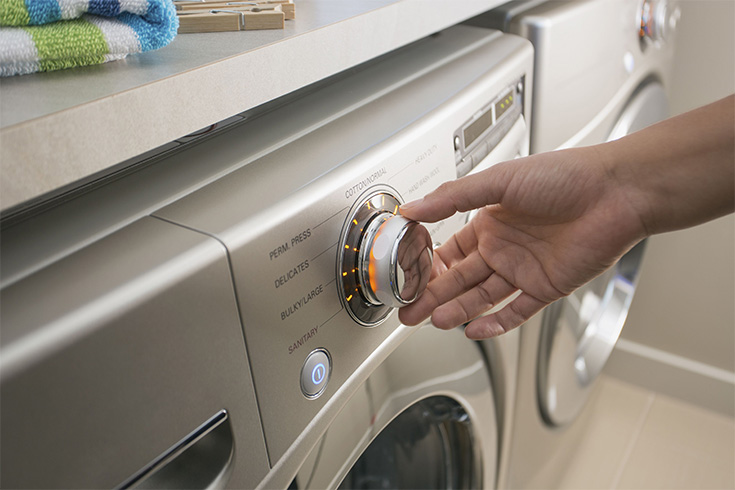Imagine this: You just finished a load of laundry, and the fresh scent of clean clothes fills the air. But as you transfer the damp garments to the dryer, a wave of panic washes over you. What temperature should you use? Too high, and your favorite sweater might shrink into a miniature version of itself. Too low, and your clothes might remain damp, inviting the unwelcome presence of mildew.

Image: urbanmoms.ca
The truth is, the ideal heat setting for your dryer is a delicate dance between getting your clothes perfectly dry and avoiding any unwanted surprises. This guide explores the nuances of dryer temperatures, their impact on different fabrics, and how to choose the best setting for your laundry.
Understanding the Impact of Heat on Fabrics
The heat used in a dryer plays a crucial role in the drying process. By gently agitating and warming the clothes, it evaporates the water trapped in the fabric fibers. However, excessive heat can damage delicate fabrics, causing shrinkage, fading, and even structural weakening.
Here’s a breakdown of how different fabrics react to varying heat levels:
- Delicates: Fabrics like silk, lace, and wool are particularly sensitive to heat. High temperatures can cause fibers to break down, leading to shrinkage and warping. Gentle air drying or a low heat setting is the safest option for these delicate materials.
- Cotton: Cotton is a resilient fabric that can withstand moderate heat. However, high temperatures can cause it to shrink and become stiff. Using a medium heat setting generally works well for cotton clothing.
- Synthetics: These fabrics, like polyester and nylon, are known for their wrinkle-resistant properties and quick drying times. They can tolerate higher heat than cotton, making them suitable for the “high” dryer setting.
- Blends: Garments made from a combination of different fabrics require a more careful approach. It’s essential to consult the care label and select the heat setting that’s appropriate for the most delicate fabric in the blend.
Navigating the Dryer Settings: A Guide to Choosing the Right Temperature
Most modern dryers offer a range of heat settings, from low to high. Understanding the significance of each setting will help you make informed choices for your laundry.
- Low: Designed for delicate fabrics like silk, lace, and lingerie. It uses the lowest heat setting, allowing your clothes to dry slowly and with minimal stress on the fibers.
- Medium: This setting is ideal for everyday fabrics like cotton, linen, and some synthetics. It strikes a balance between efficient drying and gentle care.
- High: This setting uses the hottest temperature and is well-suited for thicker fabrics, like towels, bathrobes, and synthetic garments. However, avoid using high heat for delicate fabrics, blends, or anything you’re concerned about shrinking.
Delicate Fabrics: The Gentle Approach
For your most cherished garments, like silk shirts or woolen sweaters, it’s essential to embrace a gentle drying approach. Low heat is your best friend. Here are some tips to keep your delicate fabrics looking their best:
- Air Dry: When in doubt, air drying is always a safe bet. Hang delicate garments on padded hangers in a well-ventilated area, away from direct sunlight.
- Tumble Dry Low: If you do choose to use the dryer, select the lowest heat setting or the “Delicate” setting if your dryer has one. Consider using a dryer ball or a few tennis balls to prevent wrinkles and keep the garment from clumping together.
- Consider a Dryer Rack: Invest in a freestanding dryer rack for a gentle drying environment. Place the delicate items flat on the rack and allow air circulation to dry them naturally.

Image: www.fashionlady.in
The Importance of Care Labels
You’ve likely seen these tiny, sometimes confusing, care labels attached to your garments – don’t underestimate their importance. They provide crucial information about the recommended care instructions for each item, including the appropriate washing and drying temperatures.
- Decoding the Symbols:
- Ironing: Look for the iron symbol, which indicates the recommended ironing temperature.
- Washing: The washing symbol indicates the maximum water temperature for washing.
- Drying: The dryer symbol indicates the appropriate dryer temperature and whether or not it’s safe to tumble dry.
Preventing Shrinkage and Other Drying Disasters
While heat is essential for drying clothes, it can also lead to unwanted shrinkage or damage if not managed correctly. Here are some tips to avoid common laundry blunders:
- Turn Garments Inside Out: This simple step helps to prevent fading and damage to the exterior fabric.
- Avoid Overloading the Dryer: A crowded dryer doesn’t allow clothes to move freely, potentially leading to uneven drying and wrinkles.
- Use Dryer Sheets: Dryer sheets not only add a fresh scent but also help soften fabrics and reduce static cling.
- Remove Items Promptly: Once the dryer cycle is complete, remove clothes immediately to prevent wrinkles and ensure that they don’t get overexposed to heat.
Embrace the Drying Power of Technology
Modern dryers are equipped with advanced features that can help you find the perfect heat setting for your laundry. Look for dryers with:
- Sensor Dry Technology: This feature uses sensors to detect when clothes are dry, preventing over-drying and excessive heat exposure.
- Automatic Cycle Selection: Many dryers offer pre-programmed cycles specifically designed for different types of fabrics and laundry loads.
- Adjustable Heat Settings: Look for dryers with multiple heat settings, allowing you to fine-tune the temperature for optimal drying results. Remember, a little knowledge goes a long way in maintaining the lifespan and appearance of your clothes. By understanding the impact of heat on fabrics and choosing the appropriate dryer settings, you can prevent shrinkage, fading, and other drying disasters.
What Heat To Dry Clothes
Remember: A Little Caution Goes a Long Way
While technology is constantly evolving to make laundry less of a chore, the basic principles of caring for your clothes remain the same. Always err on the side of caution when drying delicate fabrics. When in doubt, consult the care label and choose a lower heat setting. It’s a small investment in time and effort that can save you from major laundry disasters.





